If you’re a beginner who wants to learn everything there is to know about whiskey, then you’ve come to exactly the right place. Bookmark this page so that you can return here once you’ve learnt everything and teach it all to me.
Because I’m nowhere near an expert on whiskey. In fact, I still have a lot to learn but there are some basic things I wish someone would have told me when I knew very little about whiskey, and I’ve put them together so I can be that person for someone else who might need them.
Here then are 10 basic things beginners need to know about whiskey.
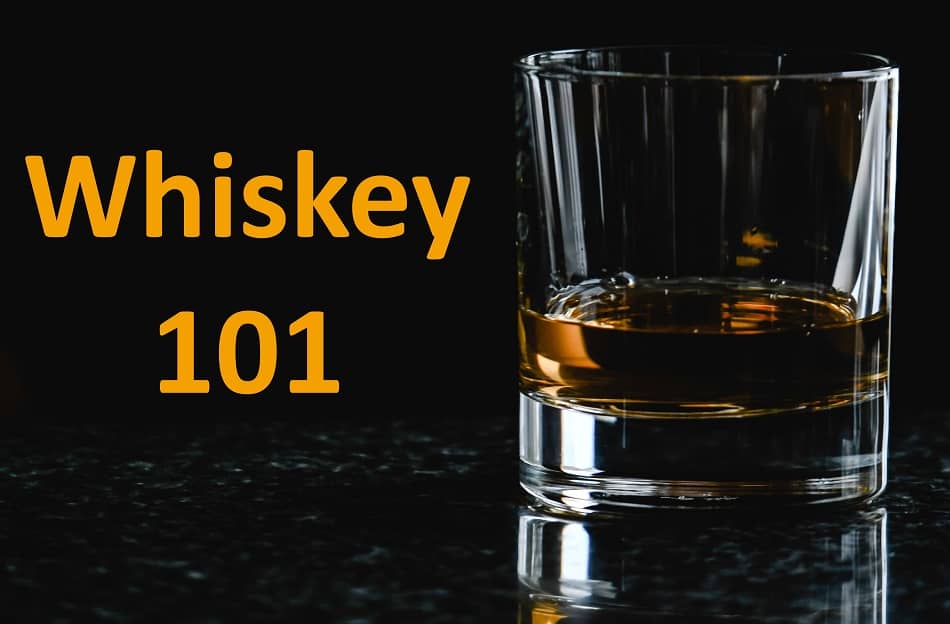
1. It Has Lots of Delicious Flavors
Whiskey has lots of delicious flavors. Now this may surprise you, because many people think whiskey is so disgusting that it’s an ‘acquired taste’, but that’s just the alcohol getting in the way (see number 2) or you drinking a whiskey with a flavor you don’t like.
The truth is that depending on how it’s made, whiskey can have any of hundreds of flavors and many have dozens of flavors at the same time. There are lots of whiskeys out there, so you’re bound to find some with flavors you don’t like but you’re also going to find some with flavors you do.
Some common flavors are:
- Honey
- Apple
- Vanilla
- Caramel
- Pepper
- Cinnamon
- Nutmeg
- Nuts
- Chocolate
- Sherry
And all these flavors are delicious. In fact, according to this research paper, vanilla is the most popular flavor in the world and according to my research (and you can guess exactly how I carried that out) it’s found in dozens of whiskeys.
research paper, vanilla is the most popular flavor in the world and according to my research (and you can guess exactly how I carried that out) it’s found in dozens of whiskeys.
You can find out the flavors of any whiskey before tasting or buying them by looking at their tasting notes. These are the aromas and flavors the distillery claims the whiskey will smell and taste like. Sometimes you can find them on the bottle and sometimes you can find them on the brand’s website.
And sometimes they’re even right.
2. It Has a High Alcohol Content Level
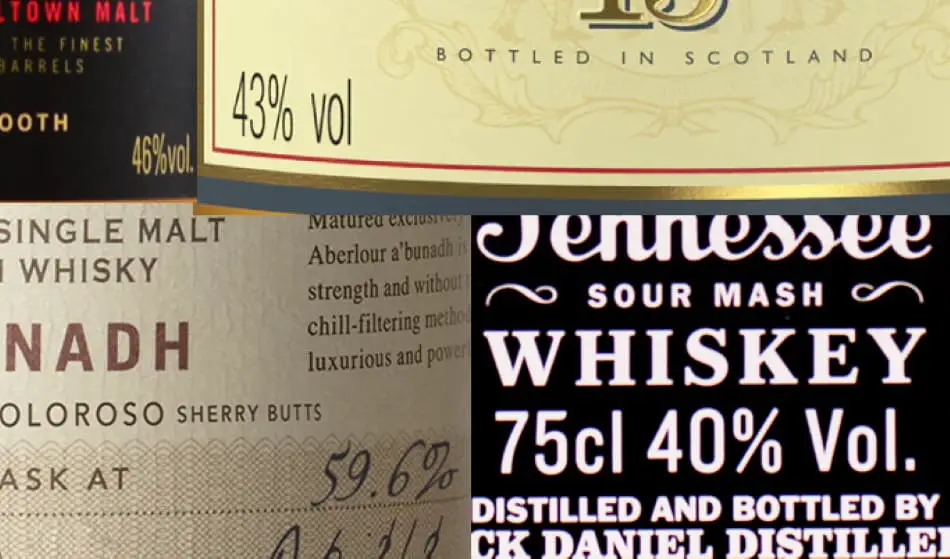
Whiskey has a high level of alcohol – anywhere between 40% – 68%ABV, with those between 52% – 68%ABV known as Cask Strength Whiskey because unlike regular whiskeys, no water was added to them when they were bottled so they retain the level of alcohol they had in the cask.
The most common ABVs for whiskey are:
- 40%
- 43%
- 46%
The high ABV (and even 40% is high) keeps some of the whiskey’s flavors closed up and dominates those that aren’t, making it difficult to smell or taste them. That’s why people think whiskey doesn’t taste nice. They’re only smelling and tasting the alcohol which, I agree, is not that pleasant.
The strong alcohol also numbs (temporarily) your smell and taste receptors and is the reason why whiskey ‘burns’ when you drink it.
That’s why you see whiskey drinkers doing all sorts of things to reduce the impact of the alcohol for example:
- Drinking whiskey from a nosing glass as its shape lets air get to the whiskey which causes some of the alcohol to evaporate
- Adding a few drops of water which dilutes the whiskey and lowers the ABV
- Chilling whiskey with ice which calms the burn of the alcohol by lowering the temperature of the whiskey and when the ice melts, by diluting it
3. It’s a Complex Drink That Needs Exploring
Whiskey is a complex drink that needs exploring. This doesn’t mean it’s complicated or difficult to drink, it just means that because it has several (or more) flavors of varying intensity that emerge at different times, and a high level of alcohol that can keep them closed up, there’s more to drinking whiskey than simply … well drinking it.
The flavors have to be explored (see number 8) and as already mentioned, the impact of the alcohol has to be reduced (although not in that order).
There’s an additional element of complexity due to the fact that some things can subtly or even drastically change the taste of your whiskey. Many of them are to do with how you reduce the impact of the alcohol, but even certain environmental factors can affect them too.
Some of the things that can alter the taste of your whiskey are:
- The glass you use. Whiskey will taste different if drunk from a tumbler
- The amount of water you add. Each drop can change the taste of the whiskey
- Whether you let the whiskey sit between pouring and drinking it so that the alcohol can evaporate, and if you do, how long that’s for. A whiskey left for a few hours will have more intense flavors than usual
- The environment you’re in. If it’s hot, cold, humid, dry or even raining outside, all that can affect the taste of your whiskey
- Food and drinks you ate before drinking whiskey. Even the whiskey you drank before this one can affect the taste of … this one
4. It’s Made from Grain, Yeast and Water
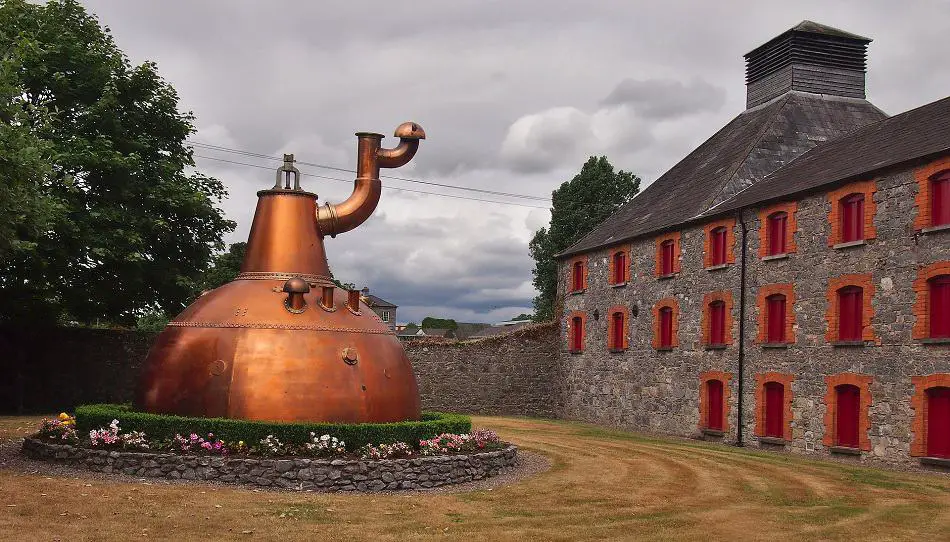
Amazingly the delicious drink that is whiskey is made from three simple ingredients – grain, yeast and water. While there are numerous variations on the whiskey making process that cause profound differences in taste and as a consequence the many different whiskeys we have – some of which you will soon come to know and love if I have anything to say about it, the overall process is the same the world over.
There are five basic stages:
Cooking or Malting Grain to Access Their Starches
All grains except for barley are ground in a gristmill and cooked with water to break down the cellulose walls that contain the starch granules. Barley on the other hand, is malted first. That means it’s soaked in warm water and left to partially sprout or germinate. It’s then dried in a kiln which if fueled by peat will give the whiskey a smoky / peaty flavor.
Mashing – Converting the Starches into Sugars
The cooked grain or malted barley is put into a large vessel called a mash tun or tub and mixed with warm water to convert the now accessed starches into sugars. It’s stirred for several hours after which the mixture becomes a thick porridge-like sugar-rich liquid known as mash.
Fermentation – Converting the Sugars into Alcohol
The mash is cooled and pumped into large traditionally wooden but nowadays stainless steel (mostly) tanks called washbacks. Yeast is added so the mixture, now known as wort, can ferment. It takes 48-96 hours for the yeast to turn the sugars into alcohol and some distilleries let it go on for longer.
The resulting liquid is called distiller’s beer and has an ABV of 5%-10%.
Distillation – Converting 5%-10% ABV into 65%-95% ABV
The distiller’s beer is heated and the alcohol, which boils at a lower temperature than water, vaporizes and rises off the rest of the liquid. It’s separated, concentrated, condensed and collected.
Two types of still are used:
- A pot still which has a bowl shape at the bottom, a narrow neck at the top and distills alcohol in batches
- A column / continuous still which has the shape of a column and distills alcohol continuously
Some whiskeys are distilled twice and others three times.
Aging / Maturation
The distilled liquid is placed into barrels and stored so it can mature.
It’s at this stage where whiskey gets 80% of its flavor.
That’s because during barrel storage, changes in temperature and humidity cause the distilled liquid to seep into the wood of the barrel and then back out again, and it picks up all sorts of flavors in the process. The seeping in and out also filters out some unpleasant notes, and some of the more volatile compounds evaporate through the barrel walls – otherwise known as the angel’s share.
The more this occurs the more the flavors from the wood are transmitted to the liquid. That’s why whiskey is aged for years or even decades.
5. There Are Different Types of Whiskey
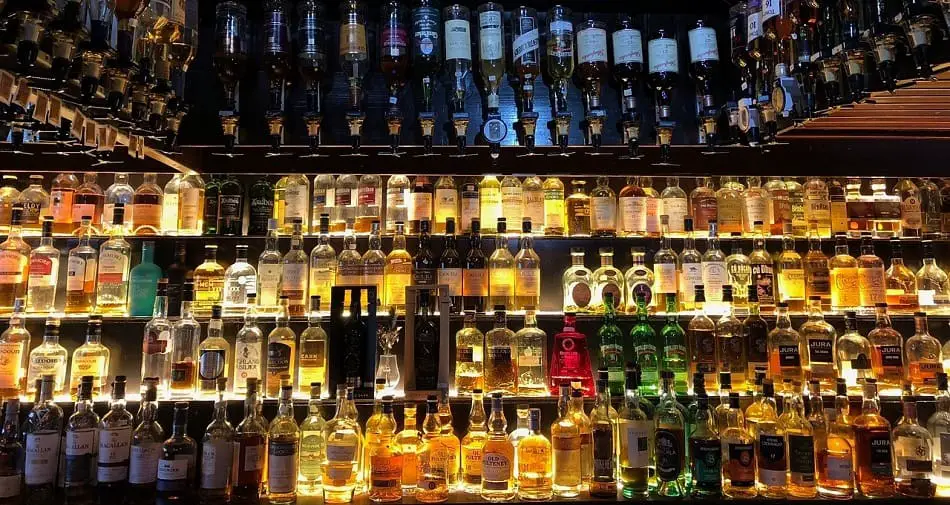
As mentioned, the whiskey making process is the same the world over, but there are numerous variations to it, which is why there are different types of whiskey, some of them having completely different flavors.
There are three ways to categorize different types of whiskey, and each are useful to know:
Categorization Based on Grain Used
- Malt whiskey – whiskey made from malted barley and distilled in a pot still
- Grain whiskey – whiskey made from any grain other than malted barley and distilled in a column still
- Single malt whiskey – malt whiskey from one distillery
- Blended malt whiskey – a mixture of single malt whiskeys from different distilleries
- Single grain whiskey – grain whiskey from one distillery
- Blended grain whiskey – a mixture of single grain whiskeys from different distilleries
- Blended Whiskey – a mixture of malt and grain whiskeys
Categorization Based on Country of Production
American Whiskey
- Must be made in America
- Must be aged in new, charred oak barrels
- There is no legal minimum aging period
- Must be bottled at a minimum of 40%ABV
- If aged for more than two years, they’re called ‘straight’
- Bourbon is made from at least 51% corn
- Tennessee whiskey is bourbon made in Tennessee. The only difference is that it’s filtered through sugar maple charcoal before being aged to eliminate impurities, mellow the flavor and jump start the aging process
- Corn whiskey is made from 80% corn and does not have to be aged, though if it is it must be in uncharred or used barrels
- Rye whiskey is made from at least 51% rye
- Wheat whiskey is made from at least 51% wheat
Scotch Whisky
- Must be made in Scotland
- Must be aged in used oak barrels – usually ex-bourbon barrels
- Must be aged for at least three years
- Must be bottled at a minimum of 40%ABV
- Produces many peated single malts
Irish Whiskey
- Must be made in Ireland
- Must be aged in used oak barrels
- Must be aged for at least three years
- Must be bottled at a minimum of 40%ABV
- Often distilled three times for more smoothness
- Produces Pot Still Whiskey from malted and unmalted barley
Canadian Whisky
- Must be made in Canada
- Must be aged for three years
- There are no restrictions on the type of barrel that can be used for aging
- Must be bottled at a minimum of 40%ABV
- It’s usually a combination of a base whisky that’s been distilled to a higher ABV and aged in used barrels to downplay its flavors, and a flavoring whisky that’s been distilled to a lower ABV and aged in new barrels for more flavors.
Japanese Whisky
- Modelled after Scotch whisky, so it’s similar in many respects
- Makes whisky from double malted or doubled peated barley
- Makes use of more still shapes and sizes than other countries
(For those of you who noticed, it wasn’t a spelling mistake. America and Ireland spell whiskey with an ‘e’ and Scotland, Canada and Japan don’t. It’s all to do with how the word was translated from its Scottish and Irish Gaelic forms.
For those of you who didn’t notice, go back and read the last section so you can be impressed with my attention to detail.)
Categorization Based on Taste
- Sweet whiskeys – where sweet flavors dominate
- Smooth whiskeys – that are not harsh and don’t burn
- Full-bodied whiskeys – which have a complex flavor profile of several if not dozens of dominant flavors
- Light-bodied whiskeys – which have a simpler flavor profile of only one or two dominant flavors
- Peaty whiskeys – which have a smoky, peaty flavor from the peat used to fuel the kiln during the malting process
- Smoky whiskeys – some whiskeys are smoky not because of the peat, but because they’re aged in charred barrels
- Spicy whiskeys – where spicy flavors dominate
- Fruity whiskeys – where the fruit flavors dominate
- Briny whiskeys – if a distillery is near the sea their whiskeys can absorb some of the briny sea air and have coastal, maritime flavors
6. Single Malts versus Blends – Which Is Better
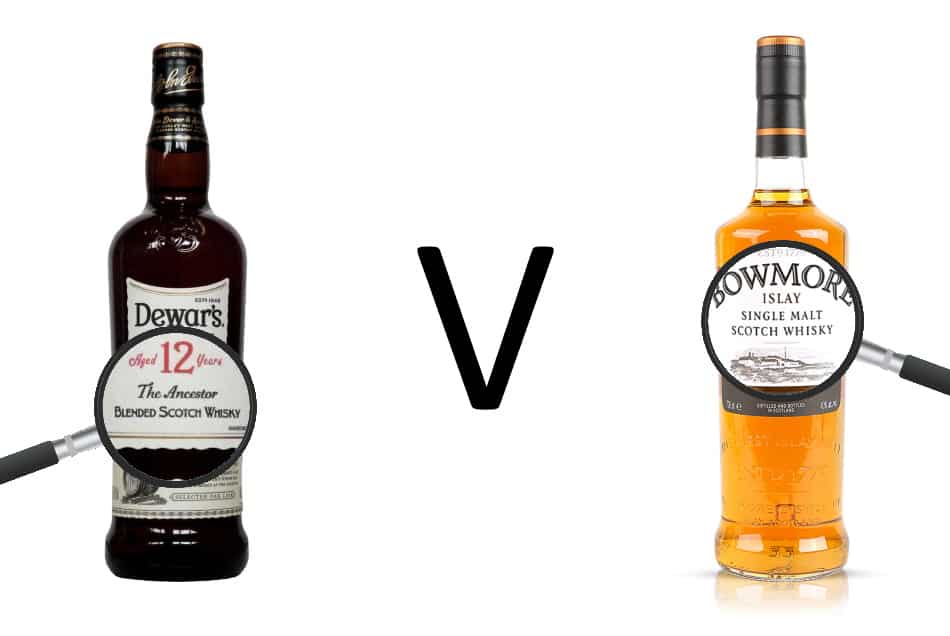
There’s a perception that blended whiskeys are inferior to single malt whiskeys. This may have something to do with people thinking single malts are not blended so they must be better than blends which need to be mixed with other whiskeys to taste good. It probably also has something to do with the fact that blended whiskeys are often cheaper.
Of course, if blends are inferior, it will be because of the grain whiskey in them not the malt whiskey. That’s because grain whiskeys are indeed cheaper and less flavorful than malt whiskeys.
Grain whiskeys are cheaper than malt whiskeys because they’re made from cheaper grains, they’re distilled in column stills that produce whiskey quicker, and because they’re aged for a shorter time.
Grain whiskeys are less flavorful than malt whiskeys because they’re not aged for the amount of time necessary to acquire all the flavors they could, since they become drinkable and therefore ready to be sold much sooner than that.
However, that doesn’t necessarily mean blended whiskeys are worse than single malts. Often there’s between 15 – 60 individual whiskeys in a blend and together they can rival many single malts in terms of flavor. On the other hand, it’s also true that single malt whiskeys do have the greatest diversity of flavors and in those terms, they can be considered better than blends.
7. The Order in Which to Try Different Whiskeys
Some types of whiskey are easier to drink than others. That being the case you may want to try different types of whiskeys in the following order:
Bourbon
In general, American whiskeys have the sweetest taste. Bourbon is the sweetest whiskey due to being made from corn – the most sugary grain used in whiskey production, and so it’s the easiest whiskey to drink. Tennessee whiskey which tastes like bourbon is sweeter according to some.
Irish Whiskey
When you’re ready to move on from bourbon, your next step is Irish whiskey. It’s not too much of a stretch as they can be quite bourbon-like but they’re definitely not as sweet. They are, however, lighter and fruitier than Scotch whiskies, and because they’re triple distilled and usually made without peat, much smoother too.
Scotch Whisky
Scotch whiskies can have the least palatable flavors but with five Scotch whisky regions producing widely varying types of whiskies, you’ll find plenty with flavors you like.
Whiskies from the Highland and Speyside regions are light, sweet and fruity, so definitely start with them before moving on to whiskies from the region of Islay which are the most pungent, peaty and smoky whiskies of all.
(I hope you all noticed my attention to detail this time.)
8. How to Drink It
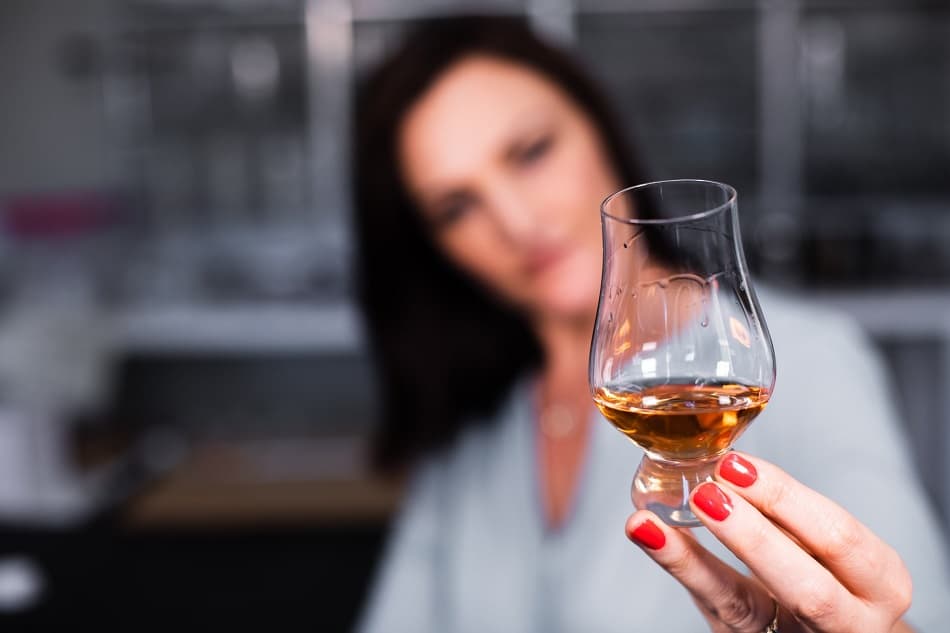
There are five ways to drink whiskey:
In a Shot
Pour your whiskey straight from the bottle into a 1 or 1.5fl oz shot glass and fill it to the top. Don’t add anything. Drink the whiskey quickly in one swallow or gulp.
Now I know what you’re thinking:
‘I may be a beginner, Josh but I can read. First you said that whiskey has lots of flavors, then you said that whiskey needs time to be explored, and now you’re telling me to drink it in shots?!’
But let me explain.
You’re certainly correct that good quality and / or expensive whiskey shouldn’t be drunk in shots. That would definitely be a waste, but if the following two conditions are met then it is better to drink whiskey in shots:
- The whiskey is cheap and / or low-quality with few / no pleasant flavors
- You want to get a decent (yet responsible) amount of alcohol into your body as quickly as possible so that its effects can also take place as quickly as possible
In a Cocktail
Whiskey is a very versatile drink and can interact well with other ingredients bringing out their flavors. That’s why there are lots of whiskey cocktails which are great for when you want a bigger drink.
And before you object again, I agree that it wouldn’t be ideal to use your best whiskey for cocktails. On the other hand, you shouldn’t use a cheap, low-quality whiskey either because you want your cocktail to taste good. You’re looking for something in between the two, a whiskey with some good flavors that may be a bit boring to drink on its own.
Some well-known (and delicious) whiskey cocktails are:
| Cocktail | Ingredients |
|---|---|
| Scotch and Soda | 2fl oz of whiskey and 4 – 6fl oz of soda |
| Old Fashioned | Whiskey with sugar, bitters and water, garnished with an orange slice and cocktail cherry |
| Whiskey Sour | Whiskey with lemon juice and sugar |
| Manhattan | 2fl oz of whiskey, 1fl oz of sweet vermouth and 2-3 dashes of bitters |
| Mint Julep | Bourbon with sugar, water, crushed ice and fresh mint |
| Rusty Nail | 1½fl oz of Scotch with ¾fl oz of Drambuie |
With Ice
Pour 2fl oz of whiskey into a tumbler – the short and wide cool looking whiskey glasses with a flat, heavy bottom, straight sides and no stem or handle, and add ice.
Once again, this is not the best way to explore all the flavors of your whiskey, but it’s a great way of calming the burn of the alcohol or having a cool and refreshing drink.
The reason why whiskey tumblers are used for drinking whiskey with ice is because:
- They’re stronger than nosing glasses which can scratch or even break if you add ice
- They’re wider so you can add giant ice cubes which is better than adding lots of small ones because with less surface area they won’t melt too quickly and dilute your whiskey
Neat
When you drink whiskey neat you can really explore all its flavors.
Pour 2fl oz of whiskey into a nosing glass. These are special glasses that have been designed to reduce the impact of the alcohol and help you detect the aromas and flavors of the whiskey. Its wide bowl lets air get to the whiskey so it can breathe and some of the alcohol can evaporate. The long narrow neck concentrates the whiskey’s aromas towards the top of the glass, so they don’t dissipate.
If you want to pick up all a whiskey’s flavors, you’re going to have to also pick up all its aromas. That’s because flavor is smell as well as taste so spend time gently smelling your whiskey and exploring its aromas. This could take several minutes as your whiskey opens up and your nose gets used to the alcohol.
Once you’ve done that you need to sip and chew your whiskey. This means, holding it in your mouth and swirling it around, making sure it spreads throughout your mouth. Assess the whiskey to see what it feels like and what flavors you can detect. When you swallow, wait a moment so the taste can come back up – called the finish. It will change as the flavors fade in your mouth.
I wrote a more detailed step by step guide on how to drink whiskey neat which you can read here.
With Water
Some whiskey aficionados believe that the only way to explore a whiskey’s flavors is to drink it neat and that adding anything to your whiskey, even water, will ruin it.
They are of course wrong.
Adding water reduces the impact of the alcohol and lets the whiskey flavors open up – the exact opposite of ruining it.
There’s no prescribed amount of water to add because it will vary from person to person and even from whiskey to whiskey. To get the most out of the flavors of your whiskey you’re going to need to experiment to discover the amount of water to add that will make a given whiskey taste best for you.
You should start out by drinking your whiskey neat but then add a few drops of water, taste your whiskey to see its effect and add more if you think it necessary later. Don’t add too much in one go because even according to those on the it’s-good-to-add-water-to-whiskey side of the debate you can still ruin your whiskey by diluting it too much.
Just be careful about the type of water you add to your whiskey. If it tastes bad, so will your whiskey. Use neutral, slightly cool water so it won’t affect your whiskey’s flavors. If your tap water has a distinctive taste, you should filter it or use bottled water.
9. They Typically Cost between $20 – $500
The majority of whiskeys cost between $20 – $70 but many are $100 or more.
The factors that determine cost are:
- The ingredients – there are higher and lower quality grains and yeast
- The type of still used for distillation – column stills work continuously whereas pot stills work in batches which is a longer and therefore more costly process
- Where the distillate is cut – only alcohol from the middle of the run doesn’t contain any unpleasant impurities or odors but the narrower you cut the distillate to exclude the bad alcohol from the beginning and the end the lower the volume of alcohol you’ll have which will increase the price of the whiskey
- How the whiskey is aged – the longer it’s aged the more it will cost
- Marketing – brands that have a reputation for delivering quality whiskeys can charge more, as can brands that have established themselves as making premium, luxury whiskeys
That’s why as already mentioned, grain whiskeys are the cheapest. They’re made from the cheapest grains, they’re distilled in column stills and they’re aged for a relatively short amount of time.
Single malt whiskeys on the other hand are the most expensive. They’re made from premium ingredients, they’re distilled in pot stills with some of the widest cuts, they’re aged for a very long time and they’re marketed as high-quality products.
The price of blended whiskeys will vary depending on the ratio of malt and grain whiskeys but they’re usually cheaper than single malts.
10. A List of Popular Whiskeys
A basic guide to whiskey would be incomplete without a list of some of the most popular, tried and tested (repeatedly) whiskeys. The prices on the following list are approximate and you can find any of them at drizly.com here .
.
Bourbon
- Jim Beam Kentucky Straight Bourbon Whiskey ($23.99)
- Wild Turkey 101 Kentucky Straight Bourbon Whiskey ($25.99)
- Maker’s Mark Kentucky Straight Bourbon Whisky ($30.79)
- Buffalo Trace Kentucky Straight Bourbon Whiskey ($32.99)
- Knob Creek Kentucky Straight Bourbon Whiskey ($36.10)
- Woodford Reserve Kentucky Straight Bourbon Whiskey ($38.99)
Tennessee Whiskey
- Jack Daniel’s Old No. 7 Tennessee Whiskey ($25.99)
Single Malt Scotch Whisky
- The Macallan 12 Year Old Double Cask Single Malt Scotch Whisky ($74.99)
- The Macallan 18 Year Old Sherry Oak Single Malt Scotch Whisky ($349.99)
- The Glenlivet 18 Year Old Single Malt Scotch Whisky ($137.49)
- Glenmorangie 18 Year Old Single Malt Scotch Whisky ($129.99)
- Glenfiddich 18 Year Old Single Malt Scotch Whisky ($119.99)
- Dalwhinnie 15 Year Old Single Malt Scotch Whisky ($74.99)
- The Dalmore 12 Year Old Single Malt Scotch Whisky ($67.99)
- The Dalmore 15 Year Old Single Malt Scotch Whisky ($128.79)
- Auchentoshan 12 Year Old Single Malt Scotch Whisky ($50)
- Auchentoshan 18 Year Old Single Malt Scotch Whisky ($144.99)
- Ardbeg Uigeadail Single Malt Scotch Whisky ($84.99)
- Bruichladdich Scottish Barley – The Classic Laddie ($59.99)
- Laphroaig 10 Year Old Single Malt Scotch Whisky ($58.62)
- Lagavulin 16 Year Old Single Malt Scotch Whisky ($103.99)
- Highland Park 12 Year Old – Viking Honour ($58.99)
- Highland Park 18 Year Old – Viking Pride ($157.99)
Blended Scotch Whisky
- J&B Rare Blended Scotch Whisky ($32.60)
- Johnnie Walker Black Label 12 Year Old Blended Scotch Whisky ($39.59)
- Johnnie Walker 18 Year Old Blended Scotch Whisky ($91.99)
- Teacher’s Highland Cream Blended Scotch Whisky ($24.19)
- Chivas Regal 18 Year Old Blended Scotch Whisky ($82.99)
- Chivas Regal 25 Year Old Blended Scotch Whisky ($362.99)
Irish Whiskey
- Redbreast 12 Year Old Single Pot Still Irish Whiskey ($68.83)
- Teeling Single Pot Still Irish Whiskey ($69.99)
- Tullamore D.E.W. Irish Whiskey ($27.99)
- Jameson Irish Whiskey ($29.99)
- Bushmills Irish Whiskey – The Original ($26.83)
Canadian Whisky
- Canadian Club Whisky ($19.79)
- Crown Royal Fine Deluxe Blended Canadian Whisky ($39.99)
- Seagram’s V.O. Canadian Whisky ($18.69)
- Signal Hill Canadian Whisky ($37.88)
Japanese Whisky
- Nikka Yoichi Single Malt ($129.99)
- The Yamazaki 12 Year Old Single Malt Japanese Whisky ($164.99)
- Hibiki 12 Year Old Japanese Blended Whisky ($119.99)
- Suntory Toki Whisky ($39.99)

